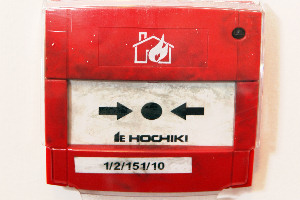No alarms without smoke? Part two
23 Nov 2011
The Safety Services team reports back on this year's building evacuation practices.

- “Can’t I just go to the toilet?”
- “This really has ruined my lecture”
- “What a waste of time, we’ve been stood outside for 10 minutes”
- “I didn’t know it was a real alarm”
These are real comments made by people during building evacuation practices at the start of this academic year.
The Safety Services team is continuing to carry out annual evacuation practices across the University. Thank you for your cooperation in making these successful and for your commitment to making improvements where necessary.
Please remember to treat any alarm as a potential harmful situation. Respond promptly by evacuating your premises via your nearest fire exit – keeping yourself, your colleagues and your students safe.
A number of the evacuations undertaken so far have taken longer than necessary:
- This often happens because people head for the door by which they entered the building: this causes queues, so please always leave the building through the nearest fire exit.
- If the alarm is sounding, don’t be afraid to use nearest fire exit door, even if it is alarmed or has devices like glass tubes or break glass boxes on it: these are provided for your benefit and, should the unthinkable ever happen, you will be a little more familiar with the quickest route to safety.
If you are in a position of responsibility, you must ensure the safety of those around you, as well as your own:
- Lecturers, for example, should direct students to the nearest exit and follow them out of the building, ensuring the prompt and effective evacuation of rooms and theatres.
- The longer people take to get out of a building, practice or not, the longer it will take for the evacuation marshals and other responders to secure the building and establish the cause of the alarm.
- So please, don’t stop for the toilet, your brew, or to finish the lecture.
Listen to the evacuation marshals and move to the muster points (ideally, go without being told!):
- Muster points, indicated by a green sign often mounted on a post or nearby building in a safe location, are provided so that evacuation marshals and other responders can communicate efficiently with evacuees.
- They are always positioned a safe distance away too, as glass from breaking windows can fly a distance equal to the height of the building.
- If you stand by the doors you are blocking the route for people trying to get out and responders trying to get in - and you might get showered by falling glass.
Finally, if you still think evacuation practices are a drain on your time:
- Please consider that we also use these practice evacuations to test the alarm thoroughly: this helps us find and investigate faults.
- In the long term, this helps us reduce the number of false alarms and ensure that you have the best chance of getting out in an emergency situation – these can and do happen. But we’ll tell you about those in the next article ...
For further information, please visit:
